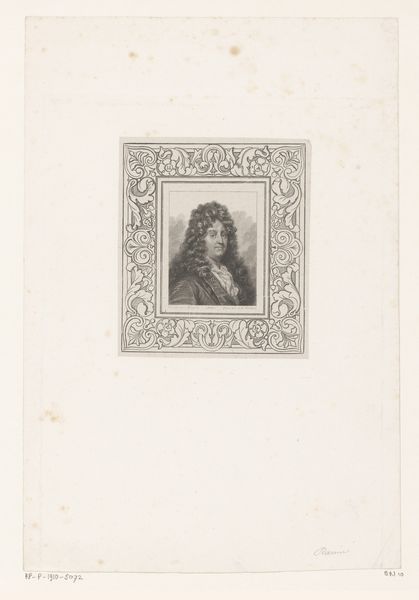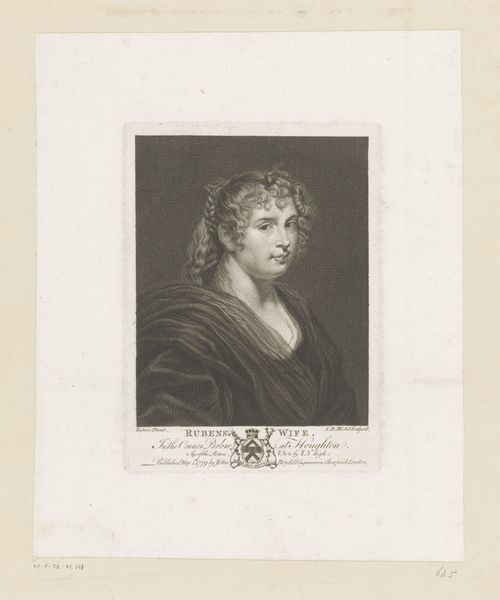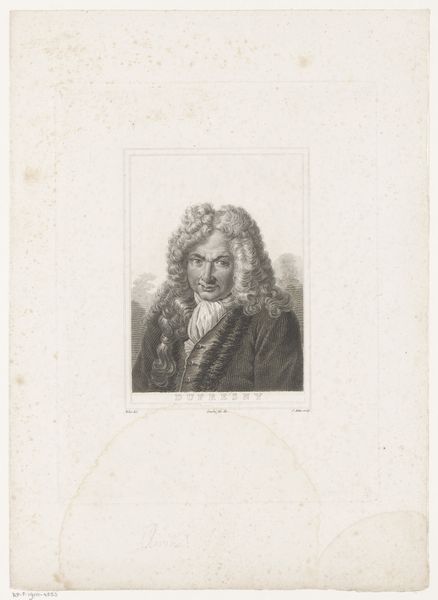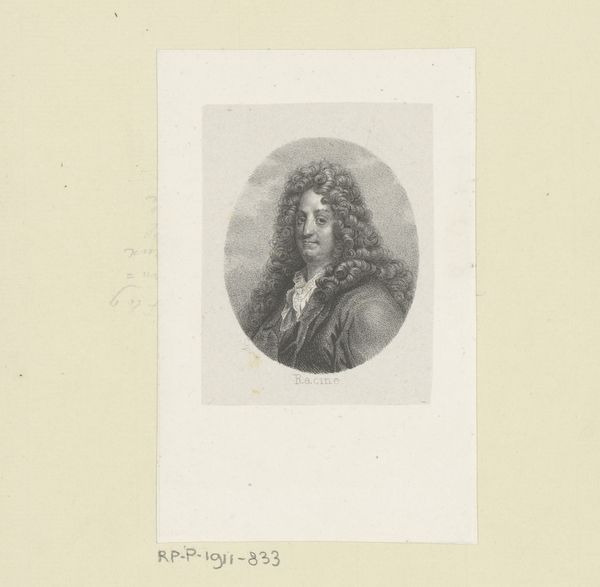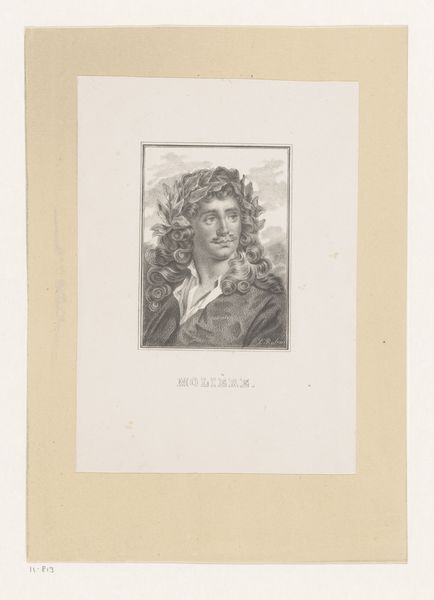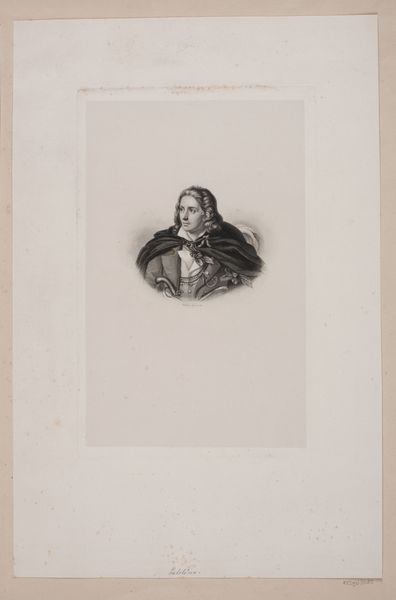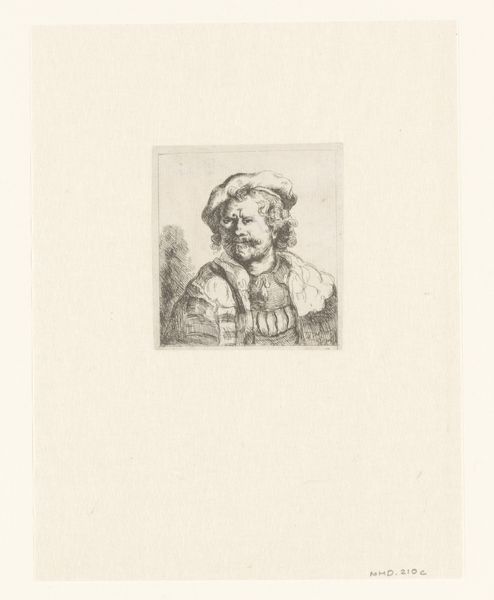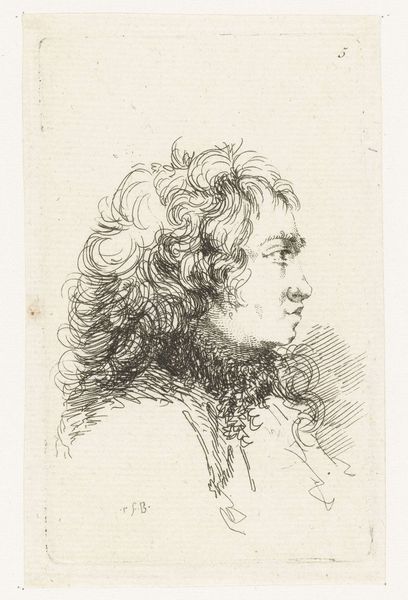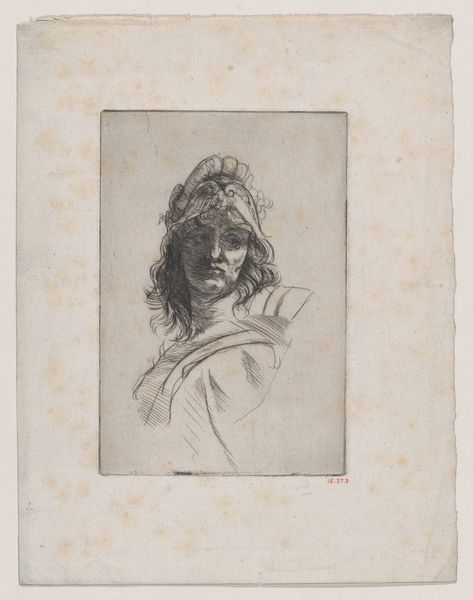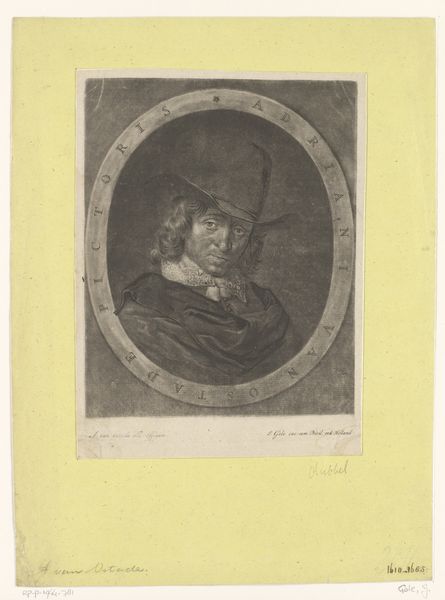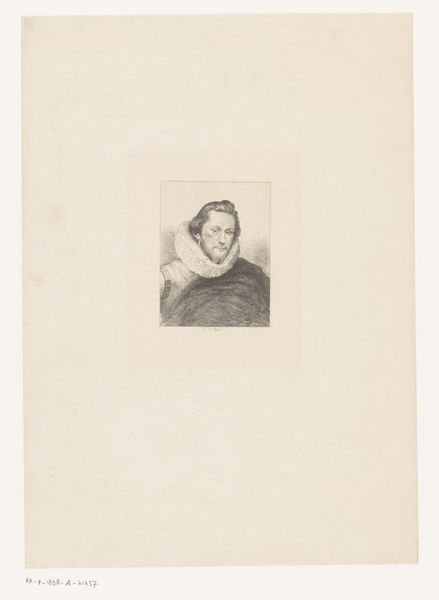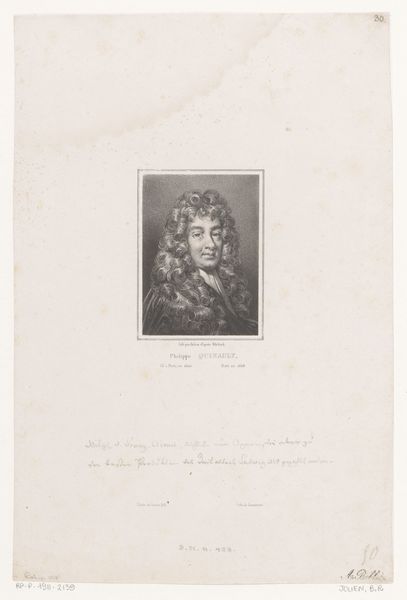
drawing, paper, pen
#
portrait
#
pencil drawn
#
drawing
#
light pencil work
#
pencil sketch
#
paper
#
pen
#
pencil work
#
history-painting
#
realism
Dimensions: height 128 mm, width 86 mm
Copyright: Rijks Museum: Open Domain
Curator: Here we have a portrait of Jean Baptiste Poquelin Molière, rendered between 1841 and 1885, currently held in the Rijksmuseum collection. It’s rendered in pen and pencil on paper. Editor: My first thought is that this rendering, almost a sketch really, feels somehow both immediate and timeless. There’s a delicate quality in the linework, creating an image that’s remarkably lifelike, while still remaining suggestive of a larger historical presence. Curator: Absolutely. The medium itself—pencil and ink on paper—speaks to its potential function. Was this preparatory work for a larger project? A study? Or perhaps it stands as its own completed object, a commodifiable portrait. Editor: That laurel wreath is really quite telling. We immediately associate the symbol with Apollo and artistic achievement, explicitly tying Molière to a classical tradition and conferring upon him a status equivalent to the great poets and playwrights of antiquity. Curator: And that begs the question, how much does the availability of paper impact the artist’s decision-making process. Also, who had access to such materials during this period, and how might their patronage have influenced the portrayal? These are material and socioeconomic factors. Editor: Consider also that while we are clearly in the 19th century given the dating, Molière was, of course, a figure of the 17th century. There's a deliberate harkening back to an earlier era and an aesthetic ideal associated with it. A desire for legitimacy through historical mirroring, if you will. The image-makers of the 1800s saw something timeless and valuable in him. Curator: Yes, the availability and production of affordable paper surely played a role in circulating these images, solidifying Molière's cultural legacy. But to your point, who commissioned it, who consumed it, and what was its intended function in the burgeoning print market? Editor: Well, looking at it now, I'm struck by how a simple portrait sketch can become such a loaded vessel for cultural memory and symbolic weight. Curator: It's a testament to how seemingly simple materials, like paper and pencil, can be leveraged to propagate ideas. A small sketch holds such a potent historical perspective, offering insights into artistic production.
Comments
No comments
Be the first to comment and join the conversation on the ultimate creative platform.
